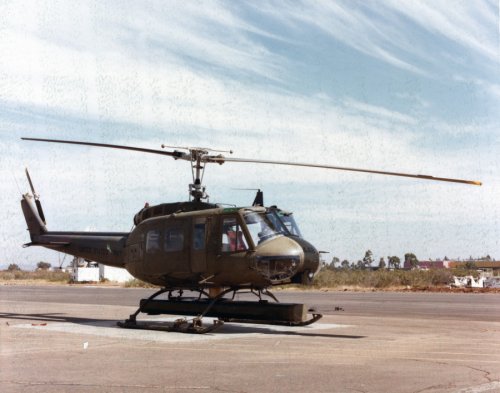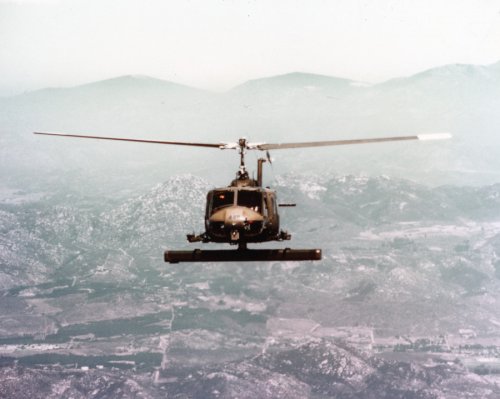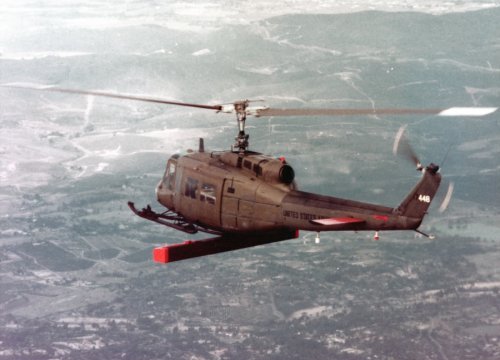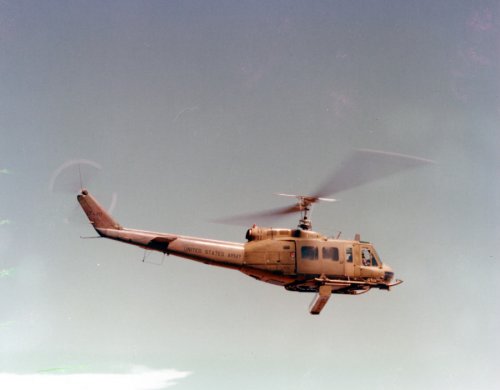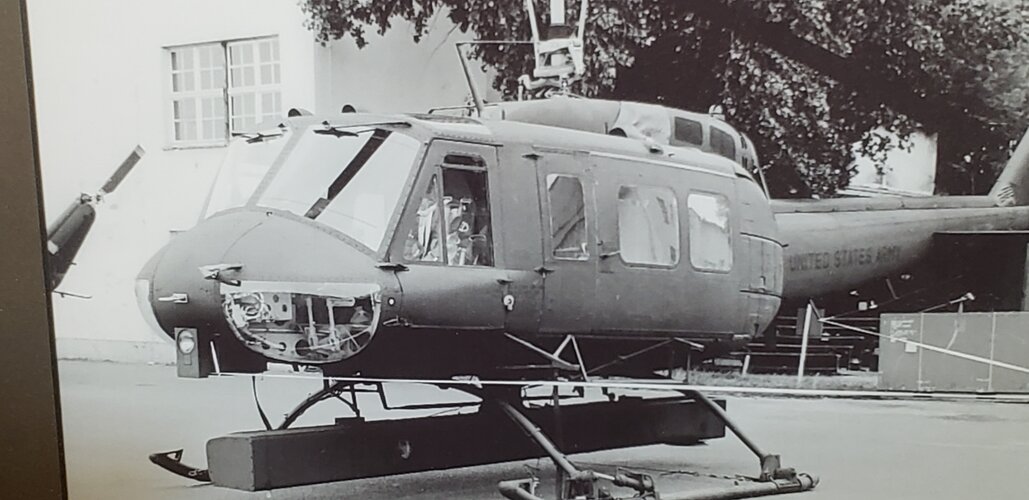- Joined
- 4 May 2008
- Messages
- 2,439
- Reaction score
- 762
I was looking at the SDASM flickr pictures dump and found a Huey modified with retractable skids, ostensibly to afford a 360 degrees field of view to the large rectangular antenna mounted on the bottom of the cabin. I was not aware of such installation.
It reminds me of the FOPEN radar installation trialled on the A-160 hummingbird a decade ago, but obviously the A-160 already had retracts.
[edit: i found this reference:
"JUH-1 SOTAS: At least four units were made for Stand Off Target Acquisition System. The Army started using it in 1979, it was unusual in the sense it had retractable skids to facilitate the radar in flight."
A single UH-60 was also modified at a slightly later date, incorporating retracts as well. Both were precursors to JSTARS]
It reminds me of the FOPEN radar installation trialled on the A-160 hummingbird a decade ago, but obviously the A-160 already had retracts.
[edit: i found this reference:
"JUH-1 SOTAS: At least four units were made for Stand Off Target Acquisition System. The Army started using it in 1979, it was unusual in the sense it had retractable skids to facilitate the radar in flight."
A single UH-60 was also modified at a slightly later date, incorporating retracts as well. Both were precursors to JSTARS]

